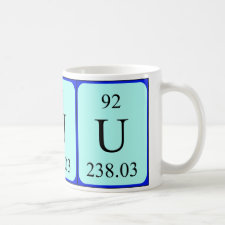
Authors: Yang S, Qian J, Kuang LJ, Hua DB
Article Title: Ion-Imprinted Mesoporous Silica for Selective Removal of Uranium from Highly Acidic and Radioactive Effluent.
Publication date: 2017
Journal: ACS Applied Materials & Interfaces
Volume: 9
Issue: (34)
Page numbers: 29337-29344.
DOI: 10.1021/acsami.7b09419
Abstract: It is strategically important to recycle uranium from radioactive liquid wastes for future uranium supply of nuclear energy. However, it is still a challenge to adsorb uranium selectively from highly acidic and radioactive waste. In this paper, we report a novel strategy for effective uranium removal from highly acidic and radioactive media by surface ion-imprinted mesoporous silica sorbent. The sorbent was successfully synthesized by a co-condensation method with uranyl as the template ion and diethylphosphatoethyltriethoxysilane as the functional ligands. The pseudo-second-order model and Langmuir model showed better correlation with the sorption kinetic and isotherm data, and the sorption equilibrium could be reached within 40 min, the maximum adsorption capacity from Langmuir model was 80 mg/g in 1 mol/L nitric acid (HNO3) solution at 298.15 K. The sorbent showed faster kinetics and higher selectivity toward uranium over other ions compared with nonimprinted mesoporous and other previous sorbents. Furthermore, the ion-imprinted materials exhibited remarkable radioresistance stability and could be regenerated efficiently after five cycles. This work may provide a new approach for highly efficient sorption of uranium from strong HNO3 and radioactive media
Template and target information: uranium, uranyl ion
Author keywords: Ion-imprinting, mesoporous silica, radioactive, strong acid, uranium sorption



Join the Society for Molecular Imprinting

New items RSS feed
Sign-up for e-mail updates:
Choose between receiving an occasional newsletter or more frequent e-mail alerts.
Click here to go to the sign-up page.
Is your name elemental or peptidic? Enter your name and find out by clicking either of the buttons below!
Other products you may like:
 MIPdatabase
MIPdatabase









